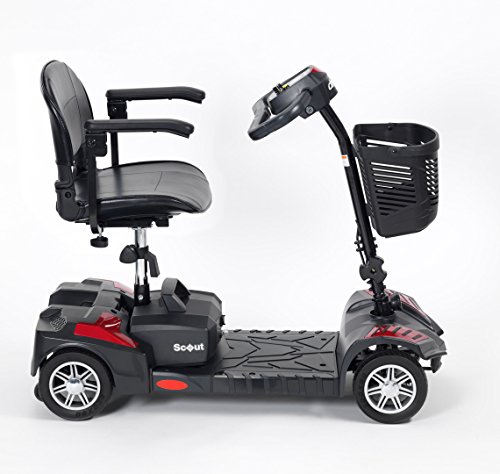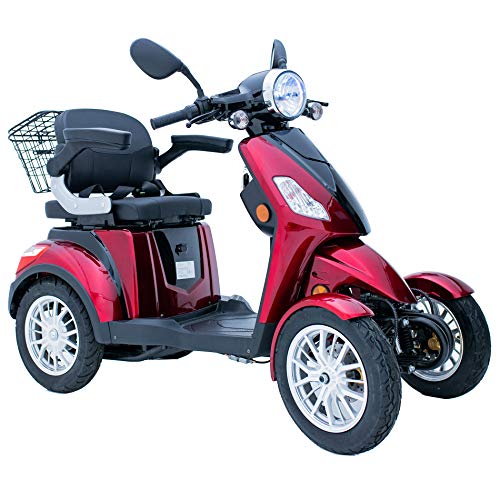지역센타회원 | 5 Killer Quora Answers On Mobility Devices
아이디
패스워드
회사명
담당자번호
업태
종류
주소
전화번호
휴대폰
FAX
홈페이지 주소
 Fleet Management and Smart Mobility
Fleet Management and Smart MobilitySmart mobility provides alternative transportation options to private vehicles and encourages carpooling. It also helps to improve sustainability by reducing pollution and traffic.
These systems require high-speed connectivity between devices and road infrastructure, as well as centralized systems. They also require sophisticated software and algorithms to process information from sensors and other devices.
Safety
 Many smart mobility solutions are designed to solve different modern city issues, such as sustainability, air quality and road security. These solutions can help to reduce traffic congestion and carbon emissions, as well as make it easier to access transportation options for people. They can also improve maintenance of fleets and provide more efficient transportation options for passengers.
Many smart mobility solutions are designed to solve different modern city issues, such as sustainability, air quality and road security. These solutions can help to reduce traffic congestion and carbon emissions, as well as make it easier to access transportation options for people. They can also improve maintenance of fleets and provide more efficient transportation options for passengers.Since the concept of smart mobility is relatively new, there are some hurdles to overcome before these technologies can be fully rolled out. This involves securing smart devices and infrastructures, developing user-friendly interfaces and secure measures for data security. To encourage users to adopt, it's important to also understand the needs and tastes of different user groups.
A key feature of smart mobility is its capacity to integrate with existing infrastructure and systems. Sensors can provide real-time information and enhance the performance of systems by integrating them into vehicles roads, transport components. Sensors can monitor conditions in the weather, health of vehicles, and traffic conditions. They also can detect and report problems with road infrastructure, such as potholes or bridges. This information can then be used to optimise routes, prevent delays, and minimize the impact on motorists.
Smart mobility also offers the benefit of enhancing fleet safety. These technologies can prevent accidents due to human error through advanced driver alerts and crash avoidance systems. This is especially important for business owners whose vehicles are used to transport goods and services.
Through facilitating the efficient use of transportation infrastructure and vehicles Smart mobility solutions can reduce fuel consumption and CO2 emissions. They can also promote the use of heavy duty electric mobility scooter cars which will reduce pollution and lead to cleaner air. Smart mobility can also provide alternatives to private car ownership and encourage public transportation.
As the number smart devices grows an extensive framework for data protection is necessary to ensure security and privacy. This includes setting clear guidelines for what data is gathered and how it's shared. This involves implementing robust security measures for cyberspace, and regular updates to protect against emerging threats, as well being transparent in data handling practices.
Efficiency
There's no doubt that the urban mobility system is in need of an urgent overhaul. The soaring levels of congestion, pollution and wasted time that characterize city transportation can affect business and the quality of life for residents.
Companies that offer solutions to modern logistical and transportation issues will be able to profit of an expanding market. But, these solutions must include technological innovation that will assist in solving key issues like traffic management, energy efficiency and sustainability.
Smart mobility solutions are based on the notion of utilizing a variety of technologies in vehicles and urban infrastructure to improve efficiency of transportation and reduce emissions, accidents, and ownership costs. These technologies generate a huge amount of information, so they need to be linked to each other and analysed in real-time.
A majority of the technology employed in transportation have built-in connectivity. These include ride-share vehicles, which can be unlocked through apps and QR codes and purchased autonomous vehicles and smart traffic signals. Sensors, low-power wireless networks (LPWAN) cards and eSIMs are a way to connect these devices to each other and to a central system.
As a result, information can be shared in real time and swift actions taken to prevent road accidents or traffic congestion. This is made possible by the use of sensors and advanced machine learning algorithms that analyze data to detect patterns. These systems also can predict future trouble spots and provide direction for drivers on how to avoid them.
Many cities have already implemented smart mobility solutions to cut down on traffic congestion and air pollution. Copenhagen for instance, utilizes intelligent traffic signals that prioritize cyclists during rush hour to cut down on commuting time and encourage biking. Singapore has also introduced automated buses that use a combination sensors and cameras to navigate specific routes. This helps optimize public transportation.
The next phase of smart mobility will be built on technology that is intelligent, such as artificial intelligence and huge data sets. AI will allow vehicles to communicate and interact with each other as well as the surroundings around them. This will reduce the need for human driver assistance while optimizing vehicle routes. It will also facilitate intelligent energy management, which will be able to predict renewable energy generation and assessing possible risks of leaks and outages.
Sustainability
Traditionally, the transport industry has been affected by inefficient traffic flow and air pollution. Smart mobility is a solution to these issues, offering a range of benefits that improve the quality of life for people. It lets people take public transport instead of driving their own car. It makes it easier to find the most efficient route and reduces the amount of traffic for users.
Smart 4 wheel mobility scooter amazon electric mobility scooters Scooters - https://gpsites.win/, is also green and offers sustainable alternatives to fossil-fuels. These solutions include ride-hailing as well as micromobility. They also permit users to use cheap electric mobility scooters for adults vehicles and incorporate public transit services into cities. Additionally, they decrease the need for personal vehicles which reduces CO2 emissions while improving the air quality in urban areas.
The digital and physical infrastructure needed for the deployment of smart mobility devices can be a bit complicated and expensive. It is essential to ensure that the infrastructure is secure and safe and is able to withstand attacks from hackers. The system should also be able to satisfy the demands of users in real-time. This requires a high level of autonomy in decision making which is challenging because of the complexity of the problem space.
Additionally, a vast number of stakeholders are involved in developing smart mobility solutions. They include transportation agencies engineers, city planners and city planners. All of these stakeholders must be able to work together. This will enable the creation of more sustainable and better solutions that are beneficial for the environment.
Unlike other cyber-physical systems, like pipelines for gas, the failure of sustainable mobility systems can result in significant environmental, social and economic impacts. This is because of the requirement to match demand and supply in real-time and the capacity of storage in the system (e.g., energy storage) and the unique mix of resources that compose the system. In addition, the systems are required to be able to handle significant levels of complexity and a wide variety of possible inputs. Because of this, they require a completely different approach that is driven by IS.
Integration
With the increasing emphasis on safety and sustainability fleet management companies must adopt technology to meet these new standards. Smart mobility is a solution that improves integration, automation, and efficiency and also boosts performance.
Smart mobility encompasses various technologies and is a term used to describe everything that features connectivity. Ride-share scooters that are accessed through an app are a prime example like autonomous vehicles and other modes of transportation that have emerged in recent years. The concept can be applied to traffic lights and sensors for roads, as in addition to other elements of the city's infrastructure.
Smart mobility is a strategy to build integrated urban transportation systems that enhance the standard of living of people and increase productivity, reduce costs, and also have positive environmental impact. These are often high-risk goals that require collaboration between city planners and engineers as along with mobility and technology experts. In the end, the success of implementation will depend on the unique circumstances in each city.
For example cities may have to expand its network of charging stations for collapsible electric mobility scooter vehicles, or might need to upgrade the bike paths and walkways to ensure more secure cycling and walking. Additionally, [Redirect Only] it can benefit from smart traffic signal systems that adapt to changing conditions, thus reducing delays and congestion.
Local transportation operators can play an important role in coordinating these initiatives. They can develop apps that allow users to purchase tickets for public transportation as well as car-sharing and bicycle rentals through a single platform. This will make it easier for people to travel, and encourage them to choose greener transportation options.
MaaS platforms enable commuters to be more flexible in their travels around the city. This is contingent on the requirements of the specific moment. They can choose to hire an e-bike for a longer journey or hire a car share ride for a short trip into the city. These options can also be incorporated into a single application that shows users the full route from door to door, and makes it easy to switch between the various modes of transport.
These kinds of integrated solutions are the tip of the iceberg when it comes to implementing smart mobility. In the future cities will need to connect their transportation networks, and provide seamless connections between multimodal trips. Data analytics and artificial intelligence will be utilized to improve the flow of goods and people, and cities will also need to support the creation and development of vehicles that are able to communicate with their surroundings.




